Made in China
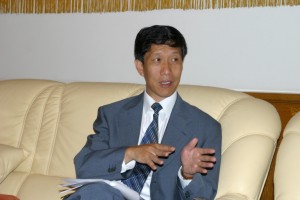 As Romania prepares to join China's largest trade partner in 2007, Ana-Maria Smadeanu asks Ambassador Xu Jian about relations between the Asian and Dacian tigers As Romania prepares to join China's largest trade partner in 2007, Ana-Maria Smadeanu asks Ambassador Xu Jian about relations between the Asian and Dacian tigers
Over the last 50 years and despite political changes, Chinese trade has managed to stay strong in most western economies and Romania is no exception to this trend. With 56 years since its own revolution, the far eastern nation has retained a tight bond with Romania, the third nation with which it set up bilateral relations, following the USSR and Bulgaria.
Ambassador Xu Jian first came to Bucharest in 1973 to study Romanian Language and Literature at the capital's University. Since then he has worked three mandates in the country and as Ambassador to Slovenia before his appointment in the top job here 18 months ago.
“I've crossed all Romania's hard periods of time, including the Revolution,” he says.
“After 1989, the following years were a little bit difficult and until 1992 trade was barter. Then the trade needed an accommodation period for both sides, that's why for several years commercial trade decreased, but in the last five to six years the trade restarted its normal flow and succeeded in maintaining an increasing average of 30 per cent. It wasn't easy but the tendency has been kept.”
Last year registered a record high, about 1.2 billion Euro [compared to one billion USD in 1979] in commercial trade, an increase of 41 per cent on the previous year. This year the countries are looking for a new record.
The Ambassador believes that although there is almost half the world between the two countries, the relationships in economics, culture, sport, tourism, aid and the military are as between two neighbours.
“A friend in need is a friend indeed,” says Jian. “Romania showed compassion to our country two years ago when China was under the SARS epidemic. When many foreigners avoided travelling to China, Prime Minister Nastase led a delegation to our country. We paid back such kindness this year. Chinese businesses offered 135,000 Euro financial support to those hit hard by the floods.”
Last year the Chinese President visited Romania and signed a mutual agreement to establish a friendship and cooperation between China and Romania. This is the first such accord between China and a central eastern European country.
There are 8,000 Chinese companies in Romania, mostly in the small and medium-sized enterprise sector. Compared with trade investment is low, at around 150 million Euro.
“This is not huge if we take into account the fact that there are almost 8,000 companies” says Jian.
Large investments include F&J, who is present in the tobacco, wood and electronic industries, and has channelled more than 35 million Euro to Romania.
Along with Huawei and ZTE in the telecom field, another big investment is from DH Sport SA, which manufactures bicycles in Romania. “Even the Romanian policemen ordered bikes from them,” says the ambassador.
Romania exports to China the same kind of products the far eastern nation imports from its Balkan partner. This includes machinery, which was the main source of trade prior to 1989, textiles and everyday products.
Mutual cooperation between the two countries also exists in tourism. Last year a new memorandum gave Romania status as a destination country for Chinese tourists, with a plan to open tourist agencies for each nation in Beijing and Bucharest. Spa areas are thought to be of particular attraction to the Chinese.
“I hope Romania will receive more Chinese tourists,” says the Ambassador. “There are only a few in Romania because of visa regulations. This is hard because the EU is asking Romania to protect the security of its borders and not allowing illegal immigrants. That's why the formalities are austere.”
However this factor can discourage some Chinese investors from coming to Romania. But in the other direction, there is no obstacle to travel, argues the Ambassador.
“We give visas very easily, in two days after the request is put through,” he adds.
There are 4,019 Chinese residents in Romania. But there is no direct flight to China, because Tarom cancelled its flight two years ago following the SARS epidemic. However the embassy has given around 3,000 visas annually for Romanians.
“After Romania joins the EU the relationships will be more developed because China has very good relations with the EU,” says the Ambassador.
And this is growing, as last year the EU was the largest commercial partner for China, with trade volume of over 140 billion Euro. Not something that easy to ignore.
|
Profile |
Xu Jian - Ambassador of the Popular Chinese Republic in Romania
Age: 49
Educated: University of Bucharest, Philology department in Romanian Language and Literature.
Previous postings: Ambassador of China in Slovenia between 2002 and 2004, deputy director of department of Ministry of Foreign Affaires for eastern Europe and central Asia (1999-2002). After graduating he worked for Chinese embassy in Romania and has worked as attaché, first secretary and counsellor. |
|
Willing partners from afar
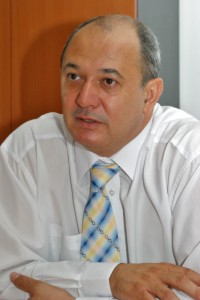 China is a willing ally for business, but the opportunities are yet to be taken by the authorities, Viorel Pana, president, Sino Romanian Business Council China is a willing ally for business, but the opportunities are yet to be taken by the authorities, Viorel Pana, president, Sino Romanian Business Council
Many investors are looking east towards the massive growth of the world's largest nation, as China's new middle class represents a large market and its labour force is still a cost-effective source of production.
With its long-term relationship still intact, Romania could take advantage of its ties to capitalise on the growth of the eastern nation.
“Although Romania may have lost its respect in other places of the world, it has been kept in China,” says Viorel Pana, president of the Sino Romanian Business Council. “And this respect is transposed through a favourable attitude from the Chinese business community.”
Democratic Party (PD) senator Viorel Pana and Chinese business people with interests in the Balkans created the Sino Romanian Business Council last February to increase bilateral trade and investment. As trade between the countries reaches a high watermark, this new council is setting up a series of summits and cooperations between Romanian and Chinese firms in areas as diverse as infrastructure, pharmaceuticals, banking and printing.
The group has seen increasing interest from Chinese companies in Romania, because the country still has room for further exploitation and presents a door for Chinese companies to the EU.
Now the group has around 85 members, including the insurance supervision commission (CSA), postage stamp firm Romfilatelia, the Romanian Printing Works (Imprimeria Romana), Alexandrion Group, Petromservice, Bancpost, Uti Group and the World Trade Center, as well as Chinese firms such as the China Development Bank, China Road and Bridge Corporation and China Enterprise.
This month the council will open a parallel branch in Beijing which could become a regional portal not only for China, but also for investors from or to Korea, Japan and Taiwan. Pana says Romania will then have a Far East representative for tourism, IT, construction and infrastructure projects.
“China is an open market. As long as the world's biggest companies are investing in China, I don't think that a Romanian company interested in investing in that market would suffer any problems,” says Pana. “All large companies are improving their relations with China and Romania cannot leave this aside.”
This month the council will organise a summit to help initiate commercial activity between companies from both countries.
“We won't stop at this, we will have to go on with the aim of mutual investment,” says Pana, who adds that there are Romanian companies who want to invest in China, especially in the South area (Hong Kong and Shanzhen).
Firms such as Alexandrion, UTI Group, Petromservice and others from the SIF investment companies portfolio see China as a challenge, says the president. On the other hand Chinese companies are interested in investing in the Romanian pharmaceutical, construction, IT and bike industries.
“Chinese investors have started the discussion with armaments manufacturers RomArm for the bicycle factory in Tohani, Brasov county,” says Pana.
In Romania, most of the large infrastructure projects are made with European money. According to Pana, Romania has to take into account offers from Asia, because they are willing partners for the projects and can come with the finance.
“Romania has to check if this is more interesting compared to what we receive from the other side of the world,” he says. “We will join the EU but that doesn't mean that we are tied to them. If we can succeed to attract a Chinese producer which is twice as cheap... why not?”
Pana also sees China as a potentially more willing partner.
“Is hard for me to believe that the biggest American companies will rush forward to invest in the Romanian market,” says Pana.
JOY AT THE OPPORTUNITY
Chinese company Friendly and Joy (F&J) is continuing to expand across a series of different sectors including tobacco, wood production, textiles, food and TV set production.
Acting vice president at F&J Romania, Roger You, believes: “Romania is a bridge between China and Europe and Chinese businesses here in Romania need time to develop.”
With an annual turnover of around seven million Euro, the company says it has a five to ten per cent annual profit.
F&J started investing in a greenfield investment in the wood industry, opening Lemnking Industry Com Ltd, a private capital company specialised in wood processing, where it established a production facility in Buzau county. 100 per cent of the production goes to export, 40 per cent to China, but also to countries such as Spain, Portugal and Italy. Two months ago, the company began to export wood to the USA.
“It was hard to get the Americans, because we were stumbled by the fact that we are from Romania,” says Roger You.
Until now F&J has invested around 25 million Euro in Romania and in October one of the firm's divisions, United Electric, will build a TV set factory. This aims to be constructed in Bucharest, in an investment worth between 8.3 and 12.5 million Euro and hopes to employ 600 to 800 employees. Roger You says he is currently looking for a factory site. On the home appliance segment F&J brand Vortex is currently the leader in the air conditioning market, and also has 25 to 30 per cent of the local microwave market.
In tobacco, F&J's Sinoroma has products that target lower price customers, with brands such as Golden Monkey and Double Horses. But the company wants to become a competitor with the big tobacco producers. Thus it has created a new premium brand called Nise to be launched later this year.
So far, Sinoroma has invested in the new brand and the modernisation of its existing factory in Buzau, with costs amounting to 33 million Euro.
Although for the moment they have the same target as SNTR (Romanian National Tobacco Company) they are not interested in purchasing the former state firm.
For the new tobacco products F&J has found a Chinese company to become a shareholder.
As if that wasn't enough, F&J also invested in textile brand Freebird and food firm Everfresh, which provides vegetables, fruits and seafood. F&J is looking for food production facilities here because it is hard to export products from China.
“We tried to import tomatoes from China but it failed. Romania does not need to import because there is such good land here,” says Roger You.
After the tobacco factory, the largest investment will be in the wood industry. They intend to produce MDF for furniture production. The investment here will be around 18.2 million Euro.
WINNING THE BIDS
Chinese companies have shown interest in the infrastructure field. A month ago Beijing's mayor signed an agreement with Bucharest on the issue of road modernisation.
“We hope Chinese companies can be involved more in this field,” adds Ambassador Xu Jian.
Future prospects for Chinese business include the construction of the bridge over the Danube in Braila, which has attracted the interest of China Roads and Bridges, but also in highway construction, for the Bucharest ring-road, a contract which construction firm Dalian International intends to win. For these, the Chinese companies were last year ready to sign with the former administration, but last summer both deals were suspended.
Pana says this was because the Romanian authorities were afraid of the EU's reaction. This was around the same time a series of deals, from Bechtel, EADS and Vinci, were attracting criticism from the west for being awarded without a tender. Now the situation is in a stalemate.
“When a Romanian president signs an agreement you have to respect your word,” says Pana. “Basescu took over our demands and had a meeting in Moscow with the Chinese President and assumed some commitments.”
The Council has so far succeeded in creating a steady flow of mutual agreements between Romanian firms and their Chinese counterparts, such as the National Printing Works and the Romanian Association for Fighting against Counterfeit Products (ARCC), who have signed an understanding with a similar institution from China to help eliminate trade in counterfeit goods.
The next step looks likely to be agreements between pharmaceutical firms, banks and potentially the Bucharest and Shanghai stock exchanges, according to Pana as well as a project for setting up an industrial park in Romania.
This is a first step forward to something that could be pretty large.
“I think and hope that Romania is intelligent enough to work with USA and EU,” says Pana, “but never to neglect Asia.”
LAYING THE LANDLINE
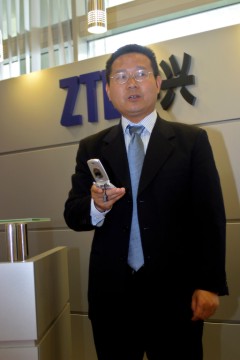 In 2002 China's largest listed telecom manufacturer and leading wireless solutions provider ZTE partnered with the Romanian state's postal service Posta Romana (Romanian Post) to create an alternative landline operator to Romtelecom. In 2002 China's largest listed telecom manufacturer and leading wireless solutions provider ZTE partnered with the Romanian state's postal service Posta Romana (Romanian Post) to create an alternative landline operator to Romtelecom.
But the massive 'Postelecom' project is yet to happen.
“It is a pity that we haven't started yet the project, both ZTE and Posta Romana have invested a lot of money and energy in this project,” says Clark Chuanzh, president of ZTE Romania.
The senior executive says the company is also cooperating with large and small telecom operators on the Romanian market and ZTE is the global supplier of telecom equipment for OTE group, which is launching the mobile phone operator CosmOTE in Romania and France Telecom, which is the local leader in this sector with Orange.
ZTE is now interested in building a manufacturing plant for producing telecom equipment. For a worldwide market, the firm manufactures a large range of items including switchers, optic fibre equipment, twisted copper wires, rooters for the Internet and handsets. The president says the company's production and development centre for central Europe and Balkans will be in Romania. The Chinese are discussing with two possible partners at the present time to co-develop the project.
“ZTE's strategy isn't to build it by ourselves,” says Chuanzh. “We would like to have a joint venture with a local company which has a plant and experience in manufacturing telecom equipment. If everything goes well we could start the construction at the beginning of the next year and definitely before 2007.”
According to Chuanzh, ZTE has many opportunities in the region. With offices in Hungary, the Czech Republic, Bulgaria, Poland, the Republic of Moldova, Turkey and Greece, ZTE initially chose Romania to be its regional headquarters, but because of tight visa regulations, the firm decamped to Turkey.
Another communications company gaining further leverage on the local market, particularly in handsets for niche telecom operators is Huawei Technologies.
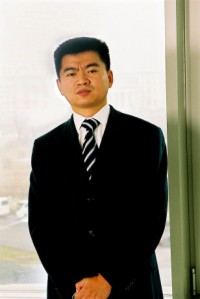 Specialising in research and development, production and marketing of telecoms equipment, the firm provides network solutions in mobile networks, landline networks, optical networks, service and software, data communications networks and handsets. Specialising in research and development, production and marketing of telecoms equipment, the firm provides network solutions in mobile networks, landline networks, optical networks, service and software, data communications networks and handsets.
Huawei is now the largest telecom vendor in China's telecom market and is quickly becoming a leading player in the global telecom market. Currently Huawei provides telecom products and solutions for over 300 operators worldwide and 22 of the world's top 50 operators are using Huawei's products and solutions.
In Romania the company has established its regional headquarters for central and eastern Europe and one of the most recent deals in which it was involved was an agreement with IT company Genesys through which the Romanian firm has become an authorised distributor of Huawei Technology's products locally, which include handset products for local mobile phone firm Zapp.
EASTERN PROMISE
A massive leisure and retail complex with the theme of China-in-miniature is preparing to be built in one of Bucharest's large parks. Chinese investors together with the Niro Group, which runs the commercial complex Niro Trade Center, have invested in the concept of 'Orient Park', which aims to recreate an Asian landscape and atmosphere in the Parcul Titan in the southeast of the capital.
The 50 million Euro project over 50 hectares aims to cover 100,000 sqm with buildings and services evoking an oriental style, such as Chinese style architecture, Chinese shops, restaurants, health complexes, karaoke facilities and hanging gardens, fishing, with oriental trees and flowers.
But an overhaul is needed, including dredging the lake, building new bridges and filling the lake and park with new fauna and flora. |
|
Prime mover
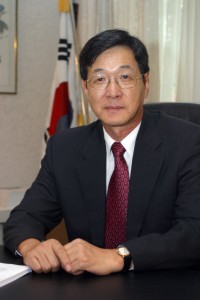 Among the first nations to take a risk on massive investment in Romania, South Korea then saw a lull in its own nation's fortunes, but is now looking to resume its status as a major investor, Ambassador Kim Dae-Sik tells Ana-Maria Smadeanu Among the first nations to take a risk on massive investment in Romania, South Korea then saw a lull in its own nation's fortunes, but is now looking to resume its status as a major investor, Ambassador Kim Dae-Sik tells Ana-Maria Smadeanu
One of the best years for South Korea in Romania was 1994.
It became the largest investor in the country when it bought out the Automobile Craiova car plant, helping at that time to strike confidence in local industry for foreign investment.
“We are proud that large Korean companies have played such a pioneering role in the direct foreign investment scene in Romania,” says Ambassador Kim Dae-Sik. “Investment has many meanings. Korean investors are not coming here to buy land or to set up shops, but to set up factories and contribute 100 per cent to the economy.”
A graduate in commerce and a management specialist Kim Dae-Sik has 30 years of experience in diplomacy, mainly in western Europe and the Ukraine, before his appointment to Romania 18 months ago. He oversees responsibility for the Korean community, which has settled with around 250 citizens, including the top management of the nation's own local representative firms, their children and missionaries who are scattered over the country.
Now South Korea has a manufacturing presence in Romania, with Daewoo Mangalia Heavy Industries building ships on the Black Sea coast and the Daewoo car plant still seeing out its orders for its vehicle brands and parts. Meanwhile to take advantage of the rise in consumer spending, particularly among the nascent middle class, global brands such as Daewoo Electronics, Samsung, Hyundai and LG are increasing their presence in the country.
Economic crisis in South Korea in the late 1990s saw a drop in new investment, which is why Dae-Sik is now looking to improve the FDI, especially as when one of his nation's multinationals comes to invest, because there can be a knock on effect which benefits other firms. “Once a Korean company invests, big Korean construction companies also come in together,” he adds.
Some Korean businesses in Romania are profitable. One of the country's largest industries, shipbuilding, has set up in Mangalia, where Daewoo Mangalia Heavy Industries has plans to become the number one shipyard in Europe, says the diplomat.
“And I think this is quite possible,” he adds.
However South Korea's electronics companies, such as LG and Samsung, have yet to set up a manufacturing base in Romania. One of the problems is a lack of infrastructure and decent transport connections.
“It is one of my deepest wishes to see one of these leading Korean companies taking the decision to invest in Romania and establish a production facility here,” says Dae-Sik. “I am sure it will not be long until this wish comes true, as Korean companies are becoming more and more interested in Romania in the perspectives of its accession to the EU.”
Last year, the Korea-Romania Advanced Technology Training Center opened a training and research facility for students and professors in Cluj-Napoca. The embassy hopes to develop this project further.
But the cultural field is, the ambassador says, so far unsatisfactory.
“There have been achievements and significant cultural exchanges, but not at the level that should and could be.” He expects a Korean Opera group to stage a Korean opera in Bucharest this October. “The problem is money, because of this we cannot introduce Korean culture more frequently,” adds the Ambassador. Over these 15 years of diplomatic relations, there have been quite a few Romanian artistic groups visiting Korea, mainly opera companies, orchestras and theatre companies.
Also Dae-Sik believes that Romania could be a good travel market for Koreans, if advertised properly. For the moment, Romania is not a tourism destination because of its distance, the lack of marketing abroad, no tourism agencies in South Korea ready to promote trips to Romania and also a lack of direct flight from Korea.
But will Romanians dare to take the trip eastward to invest in the Korean peninsula? It will take between five and ten years, says the Ambassador, before Romanians will assume the risk.
|
SOUTH KOREA (The Republic of Korea)
|
Population: almost 48.5 million people
Main industries: South Korea ranks first in shipbuilding in the world, third in tyre production, fourth in synthetic fibre manufacture, fifth in automotive production and sixth in steel output.
Main exports: Electronic products, machinery and transport equipment.
Trade figures: For the first six months of his year Romanian exports to South Korea: 41 million Euro. South Korean exports to Romania: 135 million Euro.
Largest investors in Romania: Ship manufacturers Daewoo Mangalia Heavy Industries, Car producer Daewoo Craiova and steel bar maker Otelinox Targoviste (Samsung)
|
|
Eastern gateway
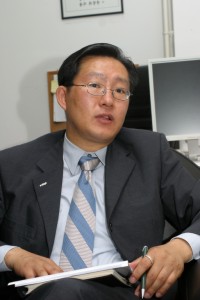 If Romanian business had a little imagination and sacrifice, it could find a partner in the Far East, while the Balkan nation could act as a portal for Korean companies entering the EU If Romanian business had a little imagination and sacrifice, it could find a partner in the Far East, while the Balkan nation could act as a portal for Korean companies entering the EU
Due to strong marketing and investment, Korean brands LG, Samsung and Daewoo have now entered into the consumer language of Romania as purveyors of affordable and premium goods.
But what can Romania bring to the Far East? Wine and skincare products are some of the options, argues Joo Young Yoon, general director for the Commercial Office of the Embassy of the Republic of Korea (Kotra), as his nation's citizens become more savvy consumers of cosmetics and more western in their leisure pursuits.
So sipping on a Murfatlar on the veranda of an apartment block in Seoul could become something Koreans aspire towards.
There is no longer any Korean interest in some of the privatisations on offer, but private-public partnerships are a possibility. Korea Hydro and Nuclear Power (KHNP) has registered an interest in the construction deal for Danube-based nuclear power plant Cernavoda's third reactor, in competition with around nine foreign companies. “KHNP has a good chance,” says Yoon.
The general director says Korean small and medium-sized enterprises (SMEs) may be looking for partners, especially in the manufacture of vehicle parts, machinery production and precision engineering.
“Romania could be the gateway to European Union,” he adds. “Korean firms think it is very favourable to invest here in the future.”
China is the largest nation in which South Korea has invested and, for logistical reasons, Romania could become a China for the European market. Companies from the Far Eastern country are interested in moving some of their production capability from western to eastern Europe, with Romania one of the more attractive proposals due to its low labour costs. “But a drastic rise in wages could be a disincentive,” says Yoon.
However a common complaint - legal stability - is a problem for South Korean firms which can generate some reluctance to invest in Romania.
With Ukraine opening up as a platform for large investment, this could also become a possible rival for the Balkan nation. “If we consider only labour costs, Ukraine is better,” says Yoon. “But if we consider all the factors associated with company activities, Romania is more favourable.”
Yoon praises the “ability” in the IT industry, but stresses that the market is not yet mature enough for partnerships with Korean companies. “Some Korean SMEs would like to have a partnership with Romanian companies and they have received some offers to invest as a stakeholder in a local company,” says Yoon. “However, many Romanian firms are too large for them. There are so many employees. A Korean firm can maintain the same company with 50 or 60 employees, where in Romania 200 or 300 people are employed. In this case the bigger the better principle does not apply.”
Less is more is the mantra of Korean business, with high diligence and hard work among the watchwords. Romania, it seems, may be just a little to inefficient for some South Koreans.
Trade between the two countries is in a state of flux. Although for the whole of 2004 Romanian exports to South Korea rose 125 per cent to around 121 million Euro, for the first six months of his year they dropped by 44 per cent to 41 million Euro.
Yoon says part of the reason is: “Romanian companies are concentrating on the European Union. This is their priority. There is also little demand for products to be exported to Korea.”
While Romania exports textiles, and must compete with China not only in price but also proximity to Yoon's country, South Korea is a supplier of car parts and automobiles.
The trade surplus is in South Korea's favour, with Korean trade to Romania increasing for the first half of this year by 54 per cent to 135 million Euro.
Add to this the notion that many Korean products are manufactured in the west and sold to Romania, so do not count as part of direct bilateral trade, and one sees a widening trade gap in South Korea's favour.
Part of Yoon's job is to find out some Romanian products which could attract his own nationals. So in looking for local products that could match with consumer demand, he has so far found wine and face cream.
“Wine could be one of the main export markets,” says Yoon. “Chilean wine at the moment dominate the South Korean market. But in terms of price and quality, Romanian wine is a possibility.”
A westernising influence has meant both older and younger Koreans have lately been seduced by the grape. “The wine market in Korea is on a steady rise,” says Yoon. “Spain made a great success on the Japanese wine market, which is now mature and satisfied. So one has to find another wine market.”
To Seoul 2005 Food Fair Spain and Bulgaria are sending delegations, but Romania, which has arguably better varieties than these two countries, has not taken up the chance yet. As to the type of wine, Yoon says the majority of Koreans are beginners in this game.
“Those who have lived or studied in foreign countries have a more specific taste,” says Yoon. “Demi-dulce [semi-sweet] would be a good choice and perhaps red will be preferred in Korea.”
Yoon also believes Farmec's cosmetic brand Gerovital could be popular in Korea. “Korean people who have visited Romania are pleased to find this product for its price and quality,” says Yoon. The domestic anti-ageing cream products have allegedly been used by Michael Jackson. Which, one could argue, may be one of the best commercials for how to maintain a youthful sheen.
DRIVING FORWARD OR
DRIVEN OUT?
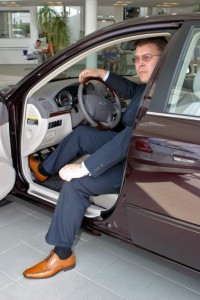 Former conglomerate Daewoo came to Romania in November 1994 with capital for 51 per cent for Automobile Craiova from the state for around 306 million USD and an investment plan totalling 850 million USD. Former conglomerate Daewoo came to Romania in November 1994 with capital for 51 per cent for Automobile Craiova from the state for around 306 million USD and an investment plan totalling 850 million USD.
Previously the facility had housed state hatch-back brand Oltcit, a cooperation with Citroen, which produced for the local small car market.
Three quarters of its sales are now of the Matiz, a box-like, light urban vehicle, popular among the young for its easy manoeuvrability and the fact that they can buy it for around 180 Euro per month over two years.
“This has little competition in the small cars segment,” says Joo Sung Chung, president of Daewoo Craiova.
But since Daewoo's car division was bought out by General Motors in 2002, the future of the Craiova plant is in doubt, because the American firm refused to buy the local factory as part of the deal.
For the moment, the facility is fulfilling orders and seeing out its license, as well as gearing up for more manufacture of car parts. The factory has a capacity to produce 125,000 vehicles, 300,000 engines and 200,000 gearboxes per year and employs 3,600 people.
“Eventual future investments depend on the strategy that will be adopted by the shareholders,” says Chung.
Now Daewoo Craiova is owned 51 per cent by Daewoo Motor Co (a part of the Korean company still independent from General Motors) and 49 per cent by the state.
But the firm is bogged down in reported debts of over 700 million Euro and is looking for a buyer.
Several car manufacturers have shown interest in the factory, according to the president. “We, in Craiova, know little details about that, because these kinds of subjects are always discussed at the level of the shareholders,” he adds. “However, the only viable solution for the factory is that the buyer be a world class car manufacturer. Any other solution, including portfolio investments, would be inappropriate.”
But one option is for the state to buy back its majority stake, a situation which the company calls a “possibility”. The president says there is no reason to shut down the factory, as long as there is a strong demand for its products.
Although the owner of the car's brand is now GM Daewoo, Chung says licensing agreements to use the name 'Daewoo' are still valid and “will continue to be valid for some years on, so licenses are not a problem now.”
Last year Daewoo Craiova had 18.6 per cent market share on the passenger car market, so the strategy for this year is to maintain this volume on the domestic market, but also increase export of components by approximately four times, mainly to General Motors Daewoo or its affiliates.
The firm still receives parts and sells components such as engines, engine parts and gearboxes to GM Daewoo Auto & Technology (GMDAT), a company joint owned by Daewoo Motors and General Motors.
“We see good opportunities for continuing the cooperation in both directions,” says Chung.
The management maintains the confidence to reach an agreement before the end of the year or early next year.
Ambassador Dae-Sik believes that the Daewoo Craiova factory should be kept operational. “In my opinion the best solution is for GM to take over the factory, this way they will keep the Daewoo brand,” says the Ambassador.
However the car plant can only use the Daewoo name until October.
SCREEN TEST
As the middle class begins to slowly emerge, LG Romania is planning to offer the full works in technological innovation to high-end Romanian customers.
Flat panel televisions in LCD and Plasma, sleek metallic air-conditioners, refrigerators with TV, bag-less vacuum cleaners, ten kilogramme capacity washing machines and solar ovens are among the products currently on the market. Soon Romania may even see the Roboking, an automatic vacuum cleaner that cleans the floor on its own, while you can sit and read a magazine or run out to the shops. In handsets, LG is working with Orange to begin launching 3G products later in the Autumn, while its three door fridge, which the company says is a hit in the USA, will be launched this month.
LG established its own Romanian company in 2004, and now has 40 staff in Bucharest. It imports its products from abroad, stores them and sells them on to retailers, not directly to customers.
But in terms of manufacturing in Romania, Han Q, president of the local LG office, says it is “too early to invest for production due to the infrastructure. We need excellent transport infrastructure from Romania to eastern and western countries.”
In eastern Europe, at present the global firm has a production facility in Poland, where it makes LCD and Plasma screens.
Creating the demand seems to be the strategy of the company locally. At present there is no existing need for high tech premium products, such as TV side-by-side refrigerators, but that will not stop LG from trying to build up the luxury appetite. And with Romanian consumers speedily responsive to new technology, once they have the cash, LG hopes they will not be able to resist.
Currently, in televisions LG is the local market leader in LCD and Plasma monitor sales for the months of April and May this year.
“In new European countries plasma and LCD demand increased,” says Han Q, “which is why we chose to drop conventional TV brands.” For the future, this will be an area of interest in rising income customers. “In terms of size the consumer will clearly focus on between 30 and 42 inches,” he adds. “As for the place, consumers will prefer specialty shops far ahead of hypermarkets and small retailers.”
However the custom duties for plasma and LCD screens are a massive 42 per cent, if they are brought into Romania from outside EU countries. But once Romania joins the European Union this will drop to five per cent. Therefore the accession date will mean a huge drop in prices, market demand and hopefully for the firm, sales.
In the next two to five years Han Q says the sales of conventional products, such as basic television sets or toasters, will decrease and high end products will boom. It is part of LG's global strategy to harness this, as it sells conventional products in developing countries, but in the USA, western and eastern European countries such as Romania, it is focusing on premium products.
Telephones will also be a boom market, especially with the next generation already in place.
Electronic retail is in a transformation stage, says Han Q. In the past he argues that such store networks have not been that aggressive in expanding their business and have maintained the traditional format of a 500 sqm space. “But now they have started to expand network into large spaces,” he says. This includes superstores such as Media Galaxy.
This should be good for LG as it gives more space to visually merchandise and demonstrate premium goods in a shop environment.
However the store formats are still in a transitional period from traditional to innovative units. Large multinational electronic retailers, particularly from Germany, the UK and France, have yet to conquer any of the Romanian market. Meanwhile the existing networks, mainly Flanco, Domo and Altex, are picking up the prime spaces in high streets and shopping centres. This makes the ambition of an international firm switch from a greenfield investment to one of acquisition. Han Q says that such international firms are “watching” the Romanian market. “They will wait and see. If they have opportunity to penetrate, they will come, buy or invest directly.” Either way, he believes electronics retail has a “bright future” in Romania.
With a representative office in Bucharest, Samsung (which means 'three stars' in Korean) has been on the Romanian market for 14 years and now sells electronics, mobile phones, computers and equipment, distributed through different companies. “Ever since Samsung entered the Romanian market, the activity of the company grow because of the interest that Romanians showed for this brand,” says Mihaela Rentea, Samsung Brand Representative in Romania.
SETTING ANCHOR
Already a strong fixture in manufacturing, ship building firm Daewoo Mangalia Heavy Industries (DMHI) aims to invest around 15 million Euro over the next four years.
Specialists in ship building, conversion and ship repair, the firm also builds barge and offshore platforms. Starting in 1997, Daewoo Mangalia Heavy Industries was a joint venture between Daewoo Shipbuilding & Marine Engineering (51 per cent) and Romanian company 2 Mai Mangalia Shipyard (2MMS), based in the town of Mangalia on the Black Sea coast.
The shipyard has a production capacity for a new building construction of complete projects of 120,000 deadweight, says Moon Kyu Lim, president of DMHI.
The total invested between 1997-2004 was 41.8 million USD (over 35 million Euro) and the management has the intention to invest another eight million USD (around 6.5 million Euro) this year, but as a long term plan, the additional budget until 2009 will be 18 million USD (around 15 million Euro).
Its intention is to create new facilities for a new product mix, the enlargement of production capacities and the upgrade of facilities and tools.
Last year's turnover was 134 million USD (around 110 million Euro) and profit before tax was 10.5 million USD (8.6 million Euro). The firm plans around a 41 million Euro profit over the next five years and to exceed sales to around 410 million Euro.
DRIVING FORCE
Present locally for ten years now, Hyundai sells its cars through 25 national dealers and its three Bucharest showrooms. "But we'll not stop here, as we plan to open two more this year in a total investment of 150,000 Euro," Alexandru Dragos Draghici, the company's general manager, tells The Diplomat. The executive added that the firm's business in Romania has seen constant growth, with 2,100 cars being sold in 2004, up 112 per cent from the previous year.
Good signs are in sight for the turnover as well, as Draghici says the plans for this year aim for a turnover of 50 to 52 million Euro compared to last year's 24 million Euro, with a profit figure approaching 1.5 million Euro.
|
|